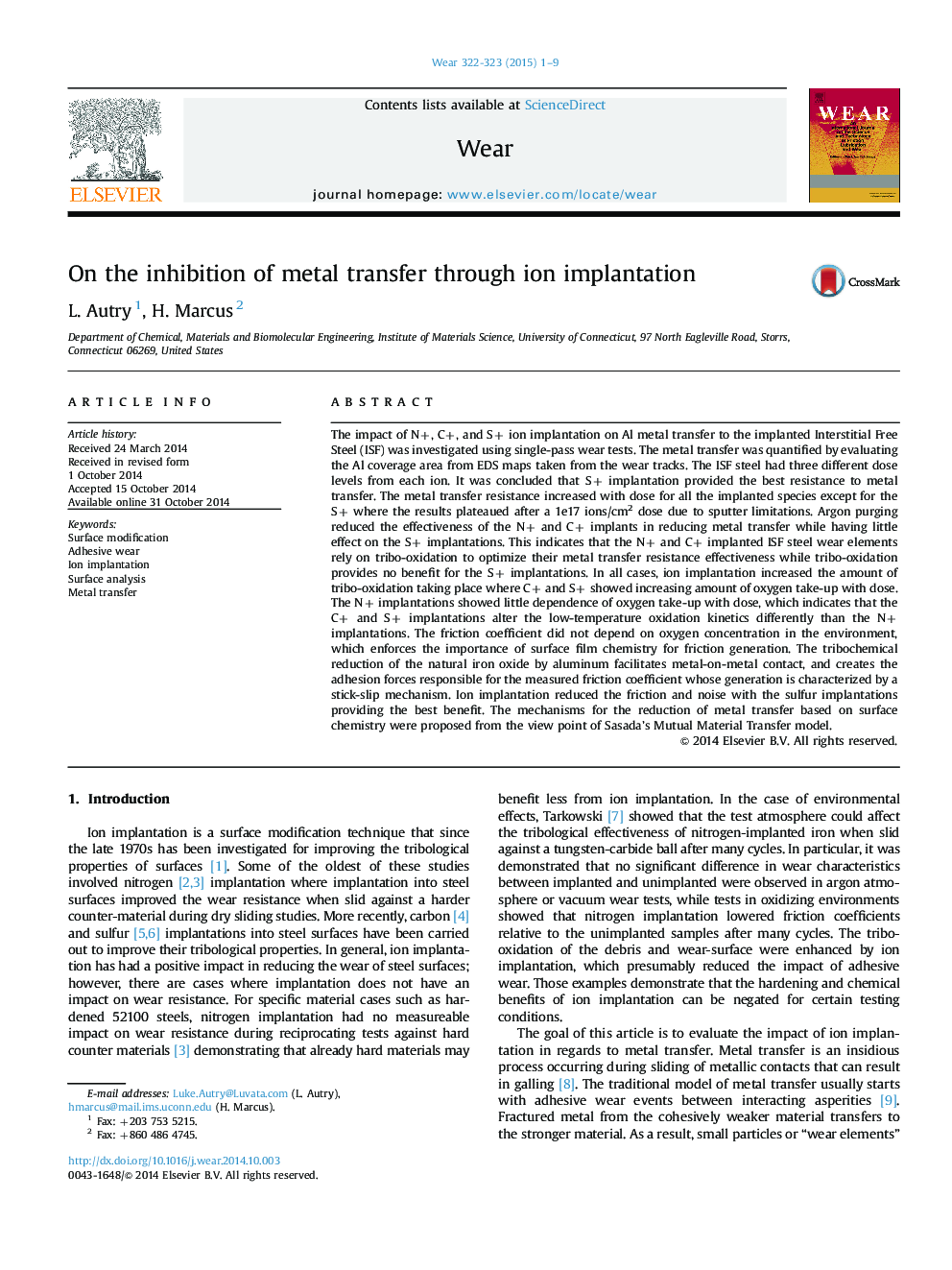| کد مقاله | کد نشریه | سال انتشار | مقاله انگلیسی | نسخه تمام متن |
|---|---|---|---|---|
| 617181 | 1454980 | 2015 | 9 صفحه PDF | دانلود رایگان |
• Ion implantation into ISF Steel was used to reduce metal transfer when rubbed against 1100 Al.
• N+, C+, and S+ at three doses were implanted then tested under different oxidizing conditions.
• Ion implantation reduced the amount of metal transfer under all testing conditions.
• S+ reduced metal transfer the most compared to C+ and N+.
• C+ and N+ relied on tribo-oxidation to maximize metal transfer reduction.
The impact of N+, C+, and S+ ion implantation on Al metal transfer to the implanted Interstitial Free Steel (ISF) was investigated using single-pass wear tests. The metal transfer was quantified by evaluating the Al coverage area from EDS maps taken from the wear tracks. The ISF steel had three different dose levels from each ion. It was concluded that S+ implantation provided the best resistance to metal transfer. The metal transfer resistance increased with dose for all the implanted species except for the S+ where the results plateaued after a 1e17 ions/cm2 dose due to sputter limitations. Argon purging reduced the effectiveness of the N+ and C+ implants in reducing metal transfer while having little effect on the S+ implantations. This indicates that the N+ and C+ implanted ISF steel wear elements rely on tribo-oxidation to optimize their metal transfer resistance effectiveness while tribo-oxidation provides no benefit for the S+ implantations. In all cases, ion implantation increased the amount of tribo-oxidation taking place where C+ and S+ showed increasing amount of oxygen take-up with dose. The N+ implantations showed little dependence of oxygen take-up with dose, which indicates that the C+ and S+ implantations alter the low-temperature oxidation kinetics differently than the N+ implantations. The friction coefficient did not depend on oxygen concentration in the environment, which enforces the importance of surface film chemistry for friction generation. The tribochemical reduction of the natural iron oxide by aluminum facilitates metal-on-metal contact, and creates the adhesion forces responsible for the measured friction coefficient whose generation is characterized by a stick-slip mechanism. Ion implantation reduced the friction and noise with the sulfur implantations providing the best benefit. The mechanisms for the reduction of metal transfer based on surface chemistry were proposed from the view point of Sasada’s Mutual Material Transfer model.
Journal: Wear - Volumes 322–323, 15 January 2015, Pages 1–9
